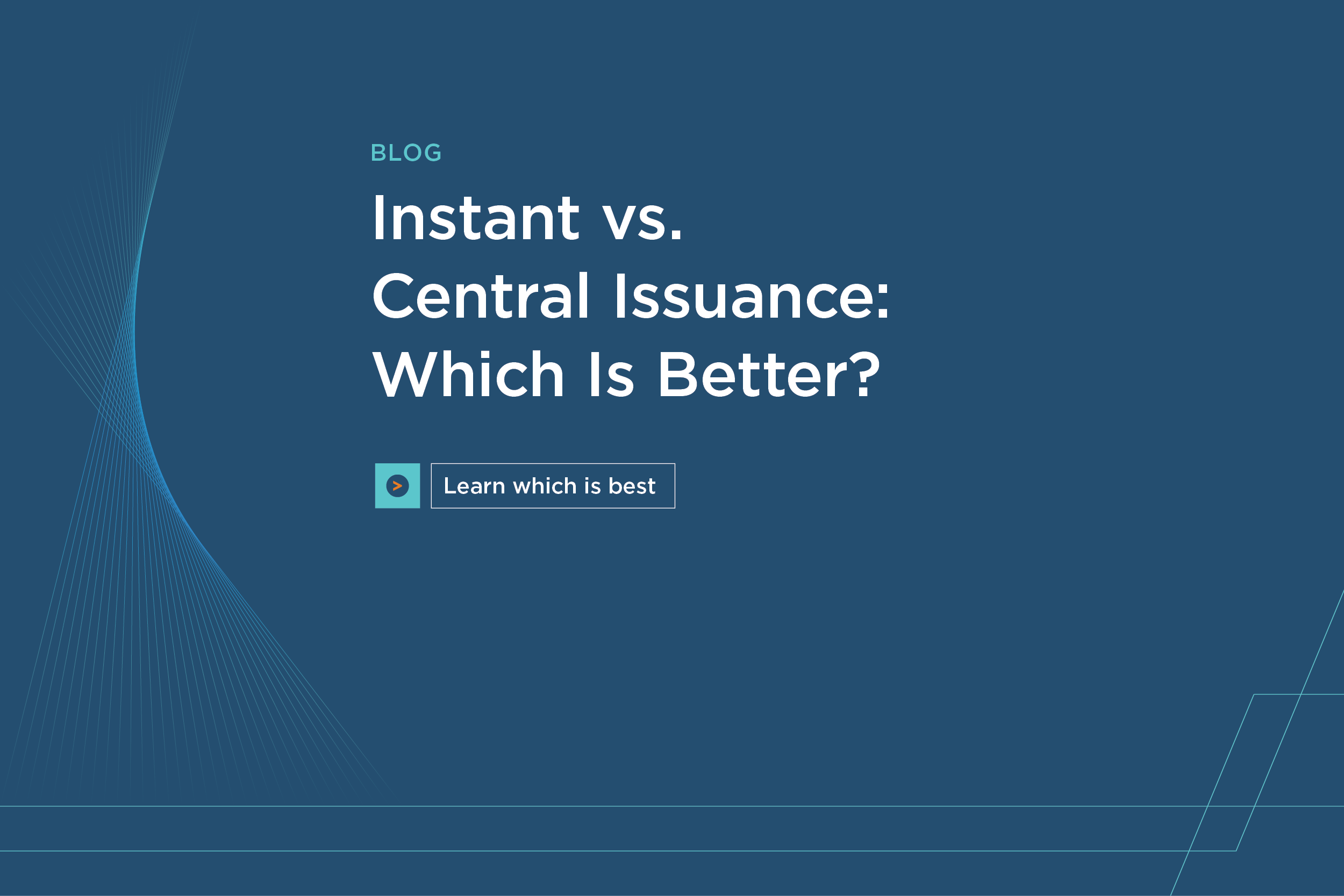Instant issuance has gained momentum in recent years, for a number of very good reasons: competitive advantage, customer satisfaction, and security benefits. And these don’t even touch on the revenue opportunity for financial institutions, such as increased activation, increased usage, top-of-wallet position and cross-sell opportunities.
With so much momentum around the adoption of instance issuance, it’s tempting for financial institutions to discount central issuance as a distribution strategy for their card portfolio. This is a mistake. Instant issuance is not an all-or-nothing solution.
Instant issuance is ideally suited for situations such as:
- Onboarding new accounts
- Emergency replacement of existing cards
- Lost or stolen cards
- Damaged cards
These are all instances in which the account holder needs his or her card as soon as possible to ensure limited interruption of card usage — and so it can remain top of wallet. Instant issuance saves the account holder and the financial institution from having to wait 5-7 business days for the new cards to arrive. Conversely, the financial institution doesn’t incur the expense to overnight cards, or the risk of it being lost or stolen through the mail.
But in instances where hundreds or thousands of cards are being shipped on a monthly basis, financial institutions should consider central issuance. In these cases, instant issuance would be neither efficient nor effective, for several reasons:
- A dedicated resource is needed to focus on producing reissues
- A QA process is needed to overcome a higher risk of errors
- A larger number of card stock is needed, requiring storage and tracking
As financial institutions seek out strategies to optimize their card portfolios, both from an expense and cardholder engagement perspective, they should seek a balanced approach to card issuance. There are a number of factors to consider when deciding when to use instant issuance or central issuance, such as size of their card portfolio, their branch footprint, market size and return on investment.
When it comes to card issuance, there is no one-size-fits-all. Both central issuance and instant issuance have key roles to play.



